Principal Investigator

Dr. Aram Amassian
Dr. Amassian is a materials scientist and engineer who has co-authored more than 210 publications in peer-reviewed journals and has delivered over 130 invited and keynote lectures. His research is in the area of energy materials, with an emphasis on energy harvesting materials and devices, such as organic photovoltaics, metal halide perovskite photovoltaics, and colloidal quantum dot photovoltaics. His group investigates the solution processing of semiconductor materials using lab-scale and fab-scale methods and develops advanced in situ characterization methods to gain insight into the non-equilibrium solidification and phase transformation of materials from solution to solid. Dr. Amassian’s work has received >20,000 citations and an h-index of 73 (Google Scholar). He was named a Highly Cited Author on Web of Science in 2020 and was inducted as a member of the Royal Society of Chemistry. He was previously awarded the Career Development SABIC Chair for his pioneering work on solution-processed optoelectronic materials and is the recipient of the American Vacuum Society’s Electronic Materials Postdoctoral, the NSERC (Canada) Postgraduate and Postdoctoral Fellowships.
Dr. Amassian obtained his B.Eng. (2001) and Ph.D. (2006) in Engineering Physics from Polytech Montreal in Canada, and he completed a postdoctoral fellowship in Materials Science and Engineering at Cornell University with George Malliaras. Amassian was appointed Assistant Professor of Materials Science and Engineering in 2009 at the King Abdullah University of Science and Technology (KAUST), where he was one of 75 faculty at the founding of the university. He joined NCSU in 2018 as Associate Professor and was recently appointed Professor (2021).
He is a pioneer in advanced characterization during solution-processing of organic and hybrid semiconductor materials used in electronics and photovoltaics and is best known for introducing in situ x-ray and optical diagnostics during spin-coating and meniscus-guided processes, such as blade coating. His research now develops and utilizes robotics in combination with characterization and artificial intelligence to establish formulation-process-structure-property relationships in an organic, quantum dot, and metal-halide hybrid perovskite semiconductor materials and devices with a primary focus on stability, efficiency, and scalable and eco-friendly manufacturability. His work has been highly interdisciplinary and collaborative, at the intersection of materials science, chemistry, and physics, as well as material, chemical, electrical and industrial engineering. His publication and funding track records reflect the transdisciplinary, collaborative, and international DNA of his collaborations.
Dr. Amassian is the co-founder of AWOS Technologies and co-founder and Chief Technology Officer of Bay Nano Technologies, which was awarded the eGames Daugherty Endowment.
Postdoctoral Researchers

Dr. Mihir Chauhan
Dr. Chauhan obtained his Bachelor’s of Technology in Electrical Engineering from CHARUSAT in India and then attended Amity University in India for his Master’s of Technology in Solar and Alternative Energy, and his Ph.D. from Pandit Deendayal Energy University (PDEU) in India for Engineering Physics. During his Ph.D. degree in engineering physics from PDEU, his research was aimed at investigating optoelectronic properties of Organic and Perovskite solar cells. He also received the research scholarship and MSCA-ITN European Early-Stage Research Fellowship at the University of Bayreuth, Germany. During his stay at the University of Bayreuth, he investigated the optoelectronic properties of organic solar cells (OSCs) with the use of fullerene and non-fullerene acceptors through electrical and optical characterization. He also investigated for the first time the change in optical features of hybrid halide perovskite materials during film formation through in-situ simultaneous absorbance and photoluminescence spectroscopy.
In the Amassian group, his research work is to understand how changes in the conformation or structure of organic and hybrid semiconductors affect their optical and electrical properties using in-situ characterization. His research will also investigate photodegradation mechanisms in organic and perovskite solar cells.
Mihir enjoys traveling, cooking, and hiking.
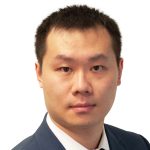
Tony Wang
Ph.D., Materials Science and Engineering (2017-present)
M.S., University of Rochester
B.S., Harbin University of Science and Technology
Tony enjoys watching football games, playing basketball, hiking, and checking local restaurants
Hybrid perovskite single-crystal related devices, Automated high-throughput micro-experimentation
Graduate Students
| Name | Research |
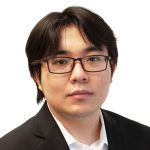 Boyu Guo Boyu Guo
Ph.D., Materials Science and Engineering (2017-present) Boyu enjoys gaming, comics, and learning new languages | Perovskite Solar Cells, Stress in Perovskite Thin Films |

Jake Mauthe Ph.D., Materials Science and Engineering (2019-present) Jake enjoys metal and woodworking | Photostability of Organic Photovoltaics |

Gaurab Thapa Ph.D., Physics (2019-present) Gaurab enjoys hiking, climbing, traveling, playing guitar, watching movies, and making barbecue | Pinpointing the Origins of Morphological Degradation in Fullerene-free Organic Photovoltaics using STM/S |

Nathan Woodward Ph.D., Electrical Engineering (2019-present) Nathan enjoys baking, woodworking, and reading science fiction | Perovskite Solar Cell Fabrication and Automation |
Undergraduate Students
| Name | Research |

Joseph Schroedl B.S., Computer Engineering (2019-Present) Joe enjoys DIY electronics, 3D printing, ham radio, and biking. | Chemical process automation using custom robotic platforms |
Alumni
| Name | Research |
 Dr. Jiantao Wang | Develop highly efficient and stable perovskite solar cells and understand the formation mechanism of 2D/3D heterojunctions combining advanced in-situ characterization techniques. Google Scholar |
 Dr. Benjamin Lefler | Ionic diffusion on the dynamics of film stresses and stability for metal halide perovskite photovoltaics. |
 Tajah Trapier B.S., Materials Science and Engineering (2018-2023) | Smart Windows and Electrochromic Devices |
 Laine Taussig Ph.D., Materials Science and Engineering (2018-2023) | Stimuli-responsive organic electronics for wearable electronic devices |
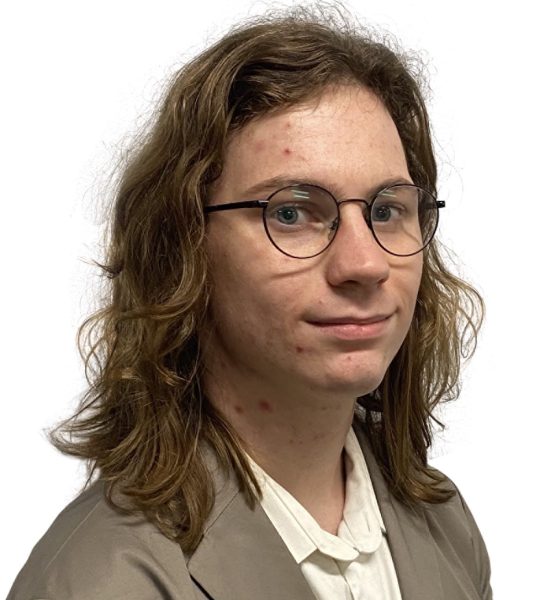 Joe Spiconardi Ph.D., Materials Science and Engineering (2022-2023) | High-throughput study and characterization of doping in organic electronics and organometallic materials |
| Yuchen Liu Ph.D. Materials Science and Engineering (2022-2023) | Cathodes for Li-batteries |
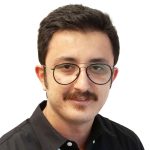 Kasra Darabi Ph.D., Materials Science and Engineering (2017-2023) | In situ characterization and thin-film device optimization |
 Darby Burns M.S. Electrical Engineering (2022-2023) | |
 Alex Almaraz (2018-2022) | Organic electronics with an interest in biomaterials LinkedIn |
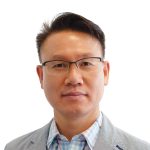
Taesoo Kim | Flexible devices utilizing a range of materials, the development of quantum dots for LEDs, and the formation and integration of perovskite materials into devices |
 Nilesh Barange (2013-2021) | Thin Films, Solar cells, OLED, Photodetector, Materials Science, Infrared camera, Electronics system design, and Embedded Systems |

Masoud Ghasemi (2013-2021) | Hybrid perovskite solar cell fabrication and optimization |

Hoang Dang | Perovskite material integration into devices and understanding the relationship between performance and material properties |
| Vikash Kumar (2019) | Hybrid perovskite solar cell fabrication and optimization |
| Addison Callan (2020) | Perovskite Quantum Dot synthesis and solar cell application |
| Connor Boyce (2020) | Hardware and software design and implementation for organic additive manufacturing |
| Kevin Fitzgerald (2021) | Hybrid perovskite single-crystal synthesis |
| Katherine Meinhold (2021) | Indium tin oxide nanoparticle synthesis for Smart Window application |

Tatiana Proksch (2020-2022) | Additive manufacturing of mixed ionic and electronic conducting polymers for the purpose of rapidly-prototyped high-performance OECT devices |

Ethan Strubinger (2020-2022) | Organic Small Molecule Thin Films for OFET Optimization |

Gail McColgan (2020-2022)
| Biocidal Multifunctional Coatings for High Traffic Hospital Surfaces |

Deepak Kumar Dubey (2020-2022)
| Highly Efficient and Stable Large-area Organic Photovoltaic Devices |

Mahesh Shinde | Development of a large area slot-die coated electrochromic coatings and devices with fast switching based on nanostructured electrochromic layers for both conventional and plasmonic smart windows. |